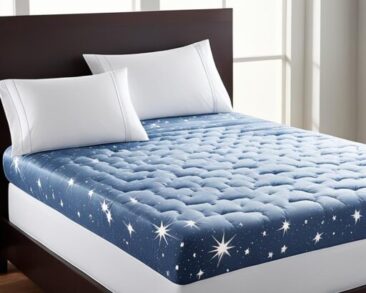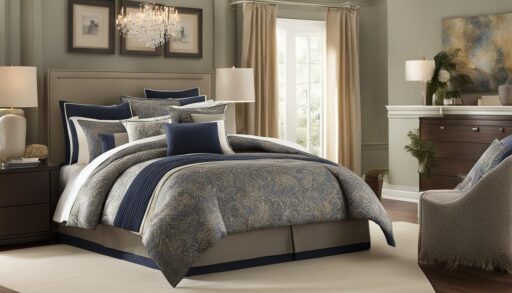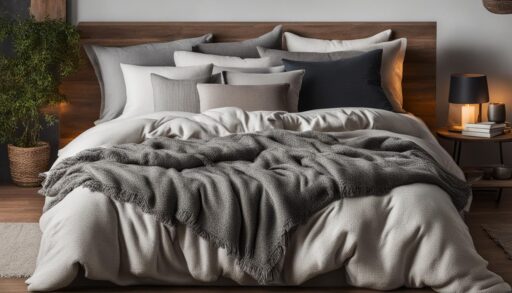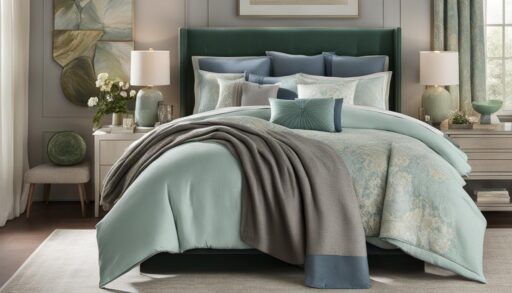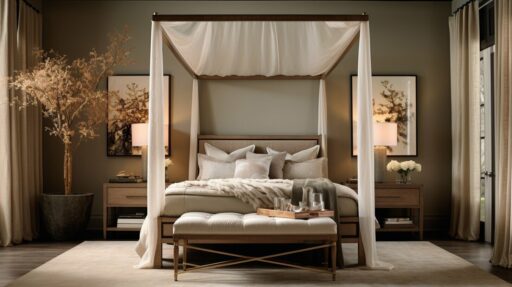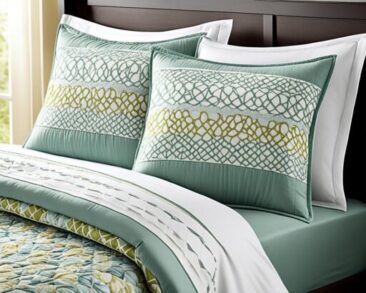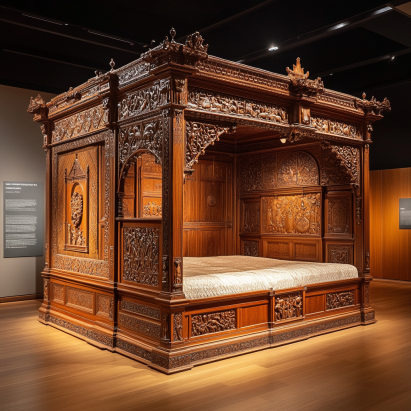Explore the world of Bedding Science to unlock better sleep. Discover the latest in sleep technology and mattress innovation for your best rest.
Continue readingEnhance Your Wellness: Uncover the Link Between Bedding and Health
Bedding and Health: How Your Bedding Impacts Sleep and Wellness
Bedding and health are deeply connected — the right mattress, pillow, and sheets can dramatically improve sleep quality and overall wellness. From breathable fabrics to ergonomic designs, your bedding choices shape the comfort, temperature, and support your body experiences every night. In this guide, we’ll explore how simple upgrades to your sleep setup can lead to profound improvements in how you feel — both in and out of bed. The connection between bedding and health is more than comfort — it’s a foundation for restorative, energizing sleep.
Key Takeaways
- Choosing the right bedding can improve sleep quality, reduce pain, and enhance overall wellness.
- A medium-firm mattress with adjustable inflation is recommended for optimal spinal support and pressure relief.
- The right pillow can prevent neck pain and shoulder stiffness by promoting healthy spinal alignment.
- Sheets made of breathable fabrics like cotton and linen can help regulate body temperature during sleep.
- Weighted blankets have been shown to improve sleep quality and relaxation, positively impacting bedding and health.
The Importance of Sleep Hygiene for Better Health
Good sleep hygiene begins with your environment. When your bedding is clean, soft, and temperature-regulating, your brain receives the right signals to wind down. Avoid synthetic fabrics that trap heat and irritate the skin. Instead, focus on materials that work in harmony with your body, like organic cotton or bamboo. Consider pairing a breathable comforter with light, moisture-wicking sheets. Small tweaks like these can help you fall asleep faster and stay asleep longer. Add in calming scents like lavender or eucalyptus to support the ritual.
The Science Behind Sleep and Its Impact on Health
Modern sleep science shows how crucial sleep is to every function in the body — from hormone regulation to tissue regeneration. But without the right bedding, your body may struggle to maintain the deep and REM stages of sleep. For instance, low-quality bedding can increase cortisol levels, leading to more nighttime awakenings. Your bedding material choices — essential for balancing bedding and health — can support your body’s restorative processes. Wool bedding from The Wool Room offers natural hypoallergenic and moisture-wicking properties ideal for deeper sleep.
The Sleep Cycle
Your sleep cycle involves transitions between light, deep, and REM stages. Disruptions in these cycles — often due to overheating, pressure points, or allergens — can prevent you from feeling rested. That’s where bedding plays a subtle yet powerful role. Think of your bedding as a sleep aid: from sheets that reduce friction, to mattresses that contour without sinking, each component ensures a smoother, more complete cycle. The right bedding acts like a silent partner supporting the rhythm of your night. Maintain sheet choice harmony for the most restorative results.
The Importance of Healthy Sleep Duration
Doctors recommend 7–9 hours of sleep for most adults, but achieving that is difficult without the right environment. Thread count quality matters — better fabrics and support promote longer, deeper sleep. Overly stiff or itchy bedding may cause unconscious tossing and turning that shortens your total rest time. According to Healthline, clean sheets also help prevent skin irritation and allergens that disrupt sleep cycles. Consider using layered bedding so you can adjust easily during seasonal changes.
Choosing the Right Mattress for Better Sleep Health
A mattress that’s too soft can misalign the spine; one that’s too firm can create pressure points. That’s why a medium-firm mattress, especially with adjustable inflation, offers ideal support. It cradles pressure-sensitive areas like shoulders and hips while promoting spinal alignment. Innovations like dual-zone beds or those featured in SmartLinen’s 2025 hotel bedding trends are worth exploring if you share your bed with a partner or suffer from back pain. Don’t forget a mattress protector — it adds both hygiene and comfort value.

The Impact of Pillows on Sleep and Neck Health
Whether you’re a side, back, or stomach sleeper, your pillow should keep your spine neutral. Too high, and your neck bends unnaturally; too low, and you lose support. Memory foam and latex options often provide the best shape retention. Down pillows, while luxurious, may not offer enough lift for side sleepers. Also consider pillow protectors to reduce allergen exposure — an often-overlooked link between bedding and health. Rotating your pillow every six months can also preserve support and cleanliness.
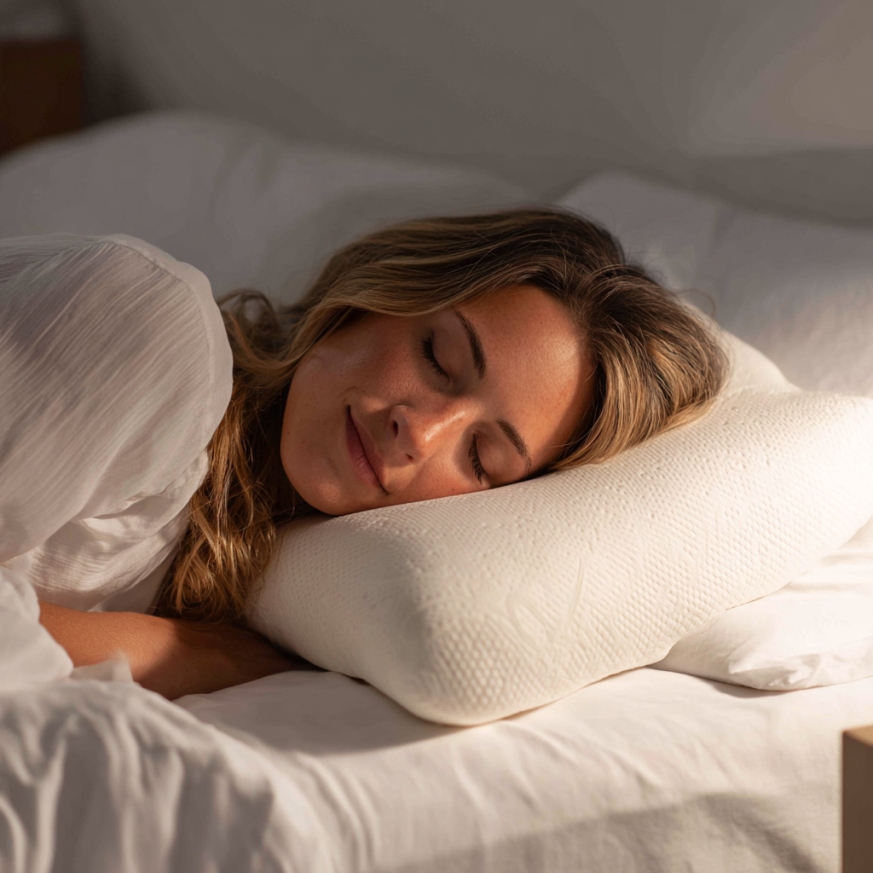
Bedsheets and Sleepwear: Influence on Sleep Comfort and Regulation
When it comes to selecting the perfect bed linen, breathability and softness go hand in hand. Natural fibers like cotton, linen, and Tencel not only feel good but also promote thermoregulation. This reduces night sweats and overheating, two common causes of sleep disruption. Comfortable, moisture-wicking sleepwear complements the effect. Brands like Peacock Alley’s Linenry merge function with aesthetic, offering style-conscious consumers breathable solutions that improve comfort and sleep duration.

The Impact of Weighted Blankets on Sleep Quality
Weighted blankets use deep pressure stimulation to trigger the parasympathetic nervous system, helping you feel safe and grounded. They’re particularly useful for those with anxiety or insomnia. By promoting serotonin and melatonin production, weighted blankets help your brain wind down faster. Choose a weight that’s about 10% of your body weight for best results. Anecdotal tips from Grandmother’s Home Blog highlight the comforting benefits of layering weighted fabrics with warm, earthy tones for a homey feel that supports mental wellbeing.
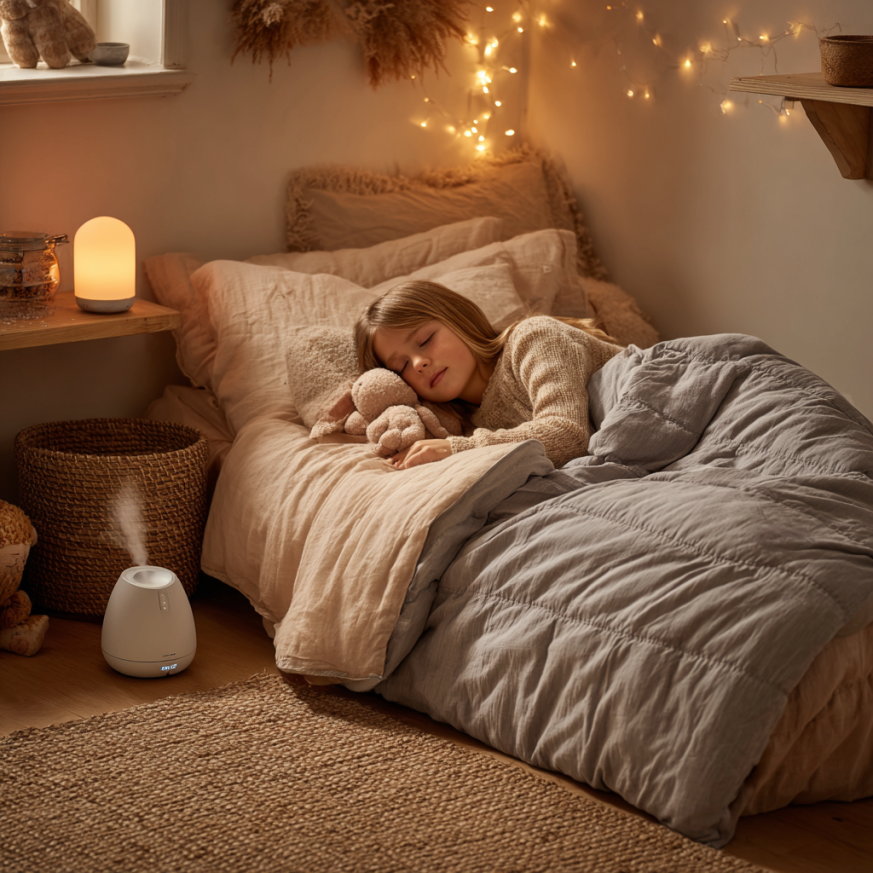
Maintaining Clean and Allergen-Free Bedding for Better Sleep Health
Allergens, dust mites, and bacteria can accumulate quickly, especially in humid environments. One of the simplest ways to protect your bedding and health is through consistent maintenance. Wash sheets weekly in hot water, vacuum your mattress monthly, and replace pillows annually. Invest in mattress and pillow protectors to extend the life of your bedding. For fresh bedroom design and health-first habits, Apartment Therapy offers practical tips that merge aesthetics with air quality and sleep hygiene improvements.
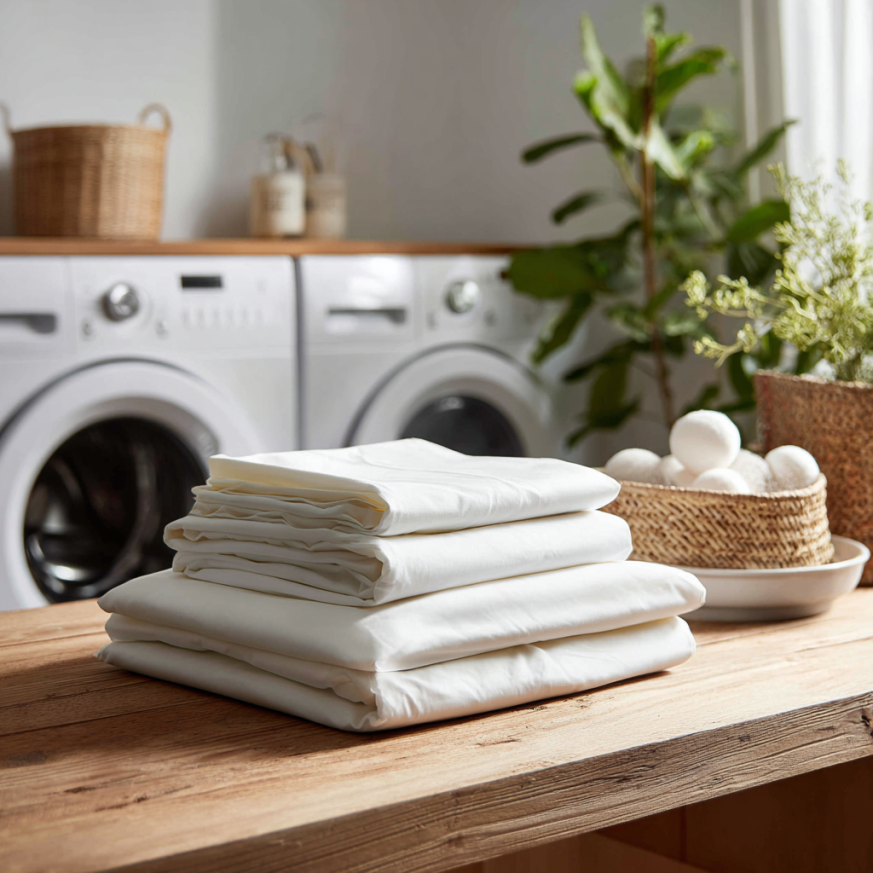
Conclusion
This holistic approach links your sleep environment to overall wellness, grounding the connection between bedding and health. By choosing supportive mattresses, breathable sheets, and properly aligned pillows, you’re investing in both your nighttime comfort and daytime vitality. Even small upgrades — like changing fabrics or improving cleanliness — have a lasting impact. Invest in your sleep space, and you invest in your quality of life.
FAQ
- What is the best type of mattress for health and comfort?
- Experts recommend a medium-firm mattress with adjustable inflation for optimal spinal support and pressure relief. Consider body type and sleeping position when choosing.
- How often should bedding be washed for better health?
- Sheets should be washed weekly in hot water. Pillows should be cleaned every 3–6 months, and mattress protectors should be washed monthly.
- What are the best fabrics for breathable sheets?
- Natural fibers like cotton, linen, and bamboo are excellent choices. They promote airflow, wick away moisture, and help regulate body temperature during sleep.
- Can a weighted blanket really improve sleep?
- Yes. Weighted blankets use deep pressure stimulation to calm the nervous system, helping reduce anxiety and improve sleep depth and duration.
- How do pillows affect spinal alignment?
- Pillows that match your sleep position (back, side, or stomach) help maintain neutral spine alignment and reduce neck pain or stiffness.
Unlock the Secret: What is a Sham Bedding?
What is a Sham Bedding
What is a sham bedding? It’s a decorative pillow cover that adds style, texture, and elegance to your bed — transforming everyday bedrooms into luxurious retreats.
Key Takeaways
- Sham bedding adds decorative flair and sophistication to your bed styling.
- It differs from pillowcases by prioritizing aesthetics and having back openings.
- Essential for creating layered, cozy, and inviting beds.
Defining Sham Bedding
Wondering what is a sham bedding? A sham, often called a pillow sham, is a stylish pillow covering used primarily for decorative purposes. Unlike standard pillowcases that emphasize hygiene and sleep comfort, shams are all about aesthetics. They typically feature envelope-style back openings and come with flanged or piped edges that give them a designer feel. Shams transform ordinary pillows into visual highlights of your bedding ensemble.
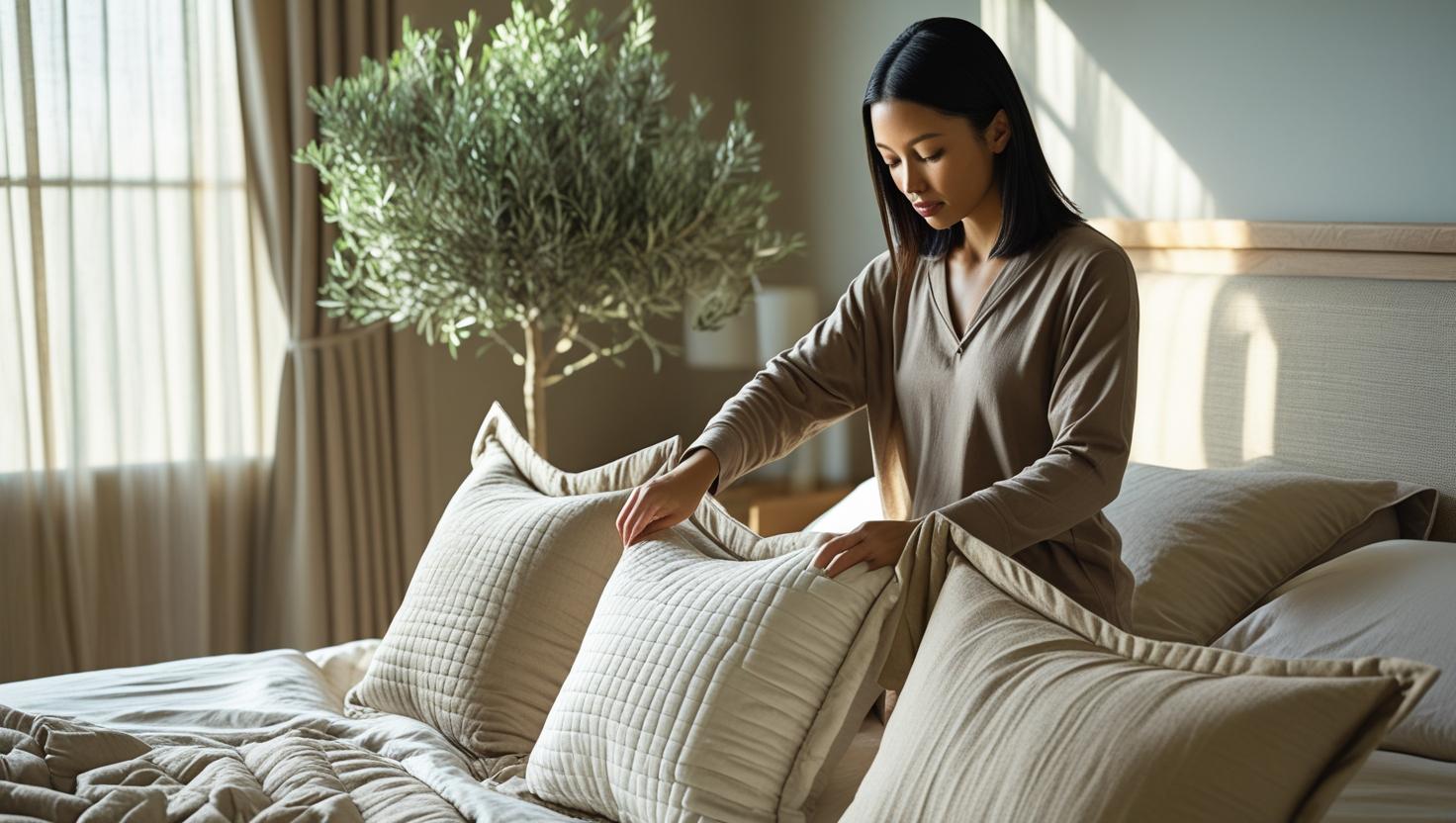
Sham bedding is available in a range of fabrics including cotton, linen, silk, and velvet, allowing you to match your bedroom’s overall theme. Whether you’re going for a bohemian vibe or a minimalist look, the material and texture of your sham can subtly reinforce the mood of your room. They’re often sold as part of bedding sets or can be mixed and matched with independent pieces for a curated, bespoke look.
For a detailed look at the evolution and function of pillow shams, check out this comprehensive sham bedding guide by Pingio Home.
Whether you favor classic, modern, or eclectic styles, sham bedding offers a simple yet striking way to personalize and elevate your bed’s appearance.
Layering Like a Pro
Layering is a cornerstone of stylish bedding. A well-styled bed typically includes sheets, blankets, coverlets, duvet covers, shams, and decorative cushions. The combination of textures and patterns creates visual depth and a curated look. Shams usually sit behind decorative pillows or in front of sleeping pillows, completing the layered arrangement that defines a designer bed.
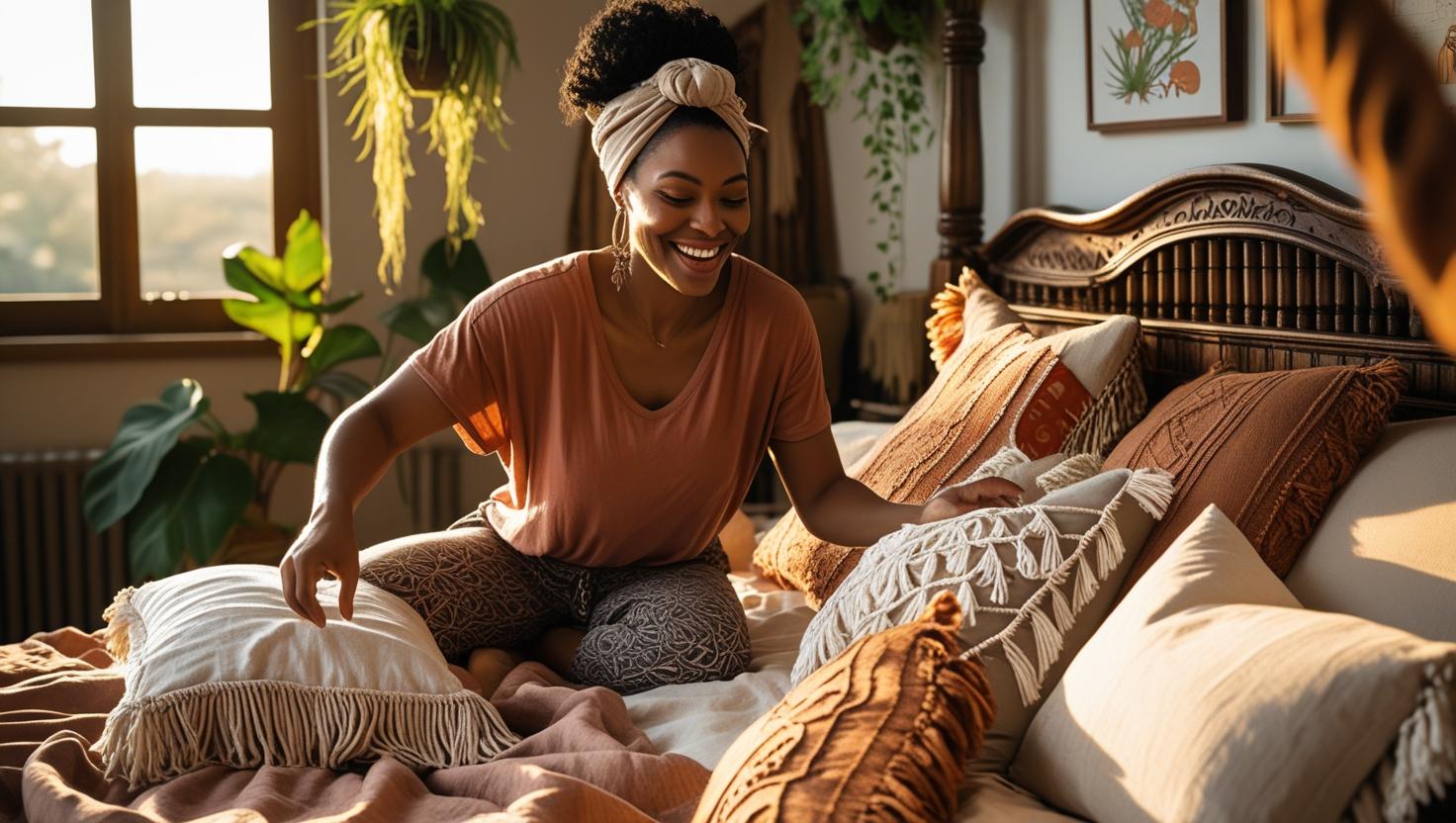
To build an inviting space, think beyond color matching and experiment with material contrasts. Combine crisp cotton sheets with a velvet sham, or pair a linen duvet cover with satin-edged pillow shams for an upscale, boutique-hotel feel. This layering technique is not just about looks — it also offers seasonal flexibility. Add or remove layers depending on the climate, making your bed not only stylish but also highly functional throughout the year.
Pillow Edging Styles
The edging of a sham is more than a finishing detail — it’s a design element. Popular styles include:
- Knife Edge: A minimalist seam for clean, simple aesthetics.
- Flange Edge: Extended fabric borders that add a soft flair.
- Welted Edge: Piped or braided trim for texture and structure.
- Scalloped Edge: Elegant, shell-like curves that feel timeless.
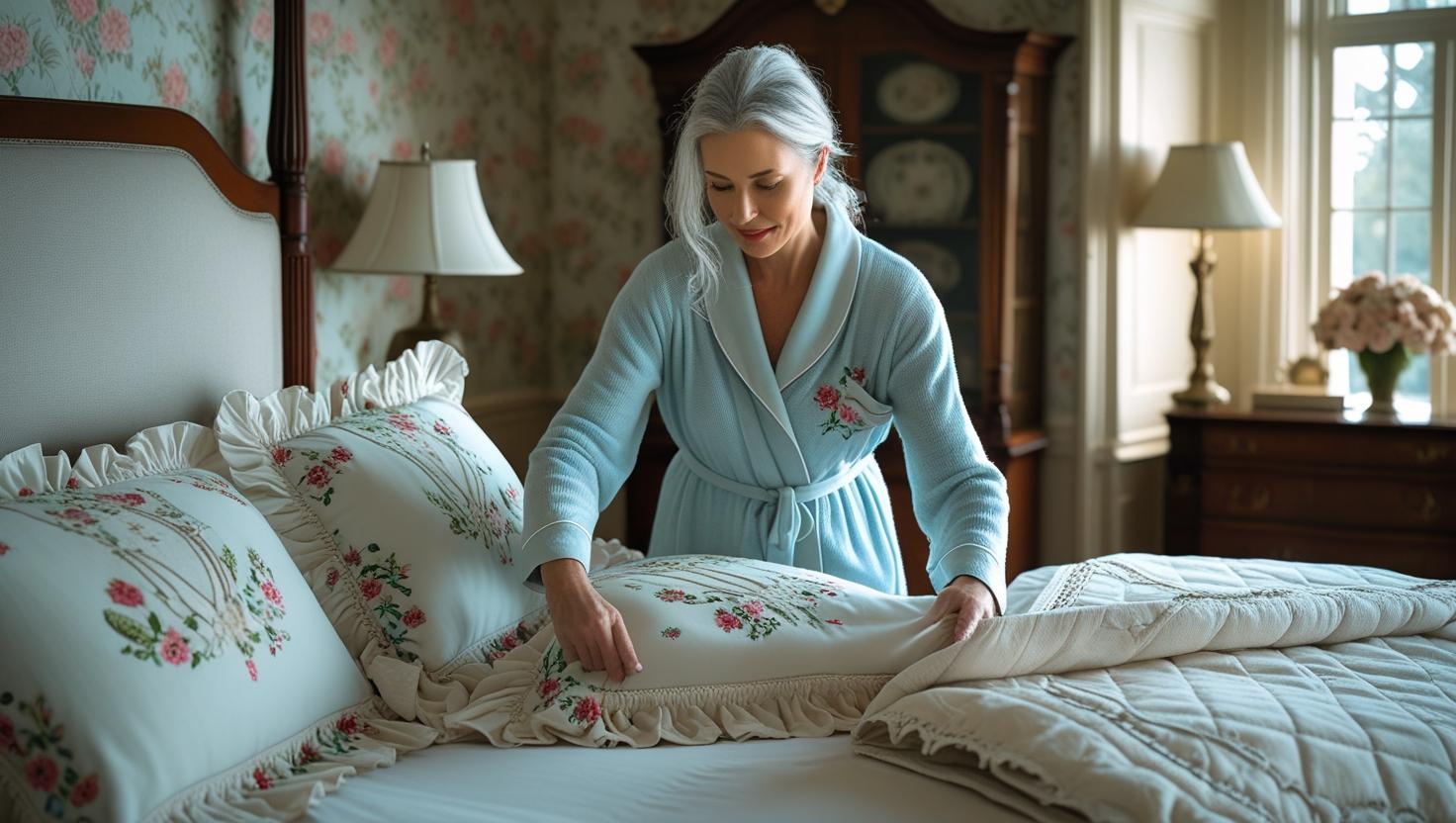
Styling with Shams and Pillows
To style a bed with shams, begin with Euro shams against the headboard for height. Add standard or king-size pillow shams next, followed by smaller accent pillows. Play with fabrics like linen, velvet, or embroidered cotton, and mix textures and colors to suit your bedroom palette.
One clever tip: use symmetrical arrangements if you prefer a balanced and calming look, or try asymmetrical pillow placement for a more modern, editorial feel. You can even rotate your shams seasonally — heavier textures like faux fur in winter and breezy linen in summer help keep your decor fresh and functional.
For more insight, see this easy-to-follow breakdown from Casper’s guide on what is a sham.
More Bedding Accessories to Consider
- How to style a bed — Master layering and arrangement tips.
- Decorative throw pillows — Add personality to your bedscape.
- Sustainable bed linens — Eco-friendly materials and choices.
- Guide to duvet covers — Selecting the perfect top layer.
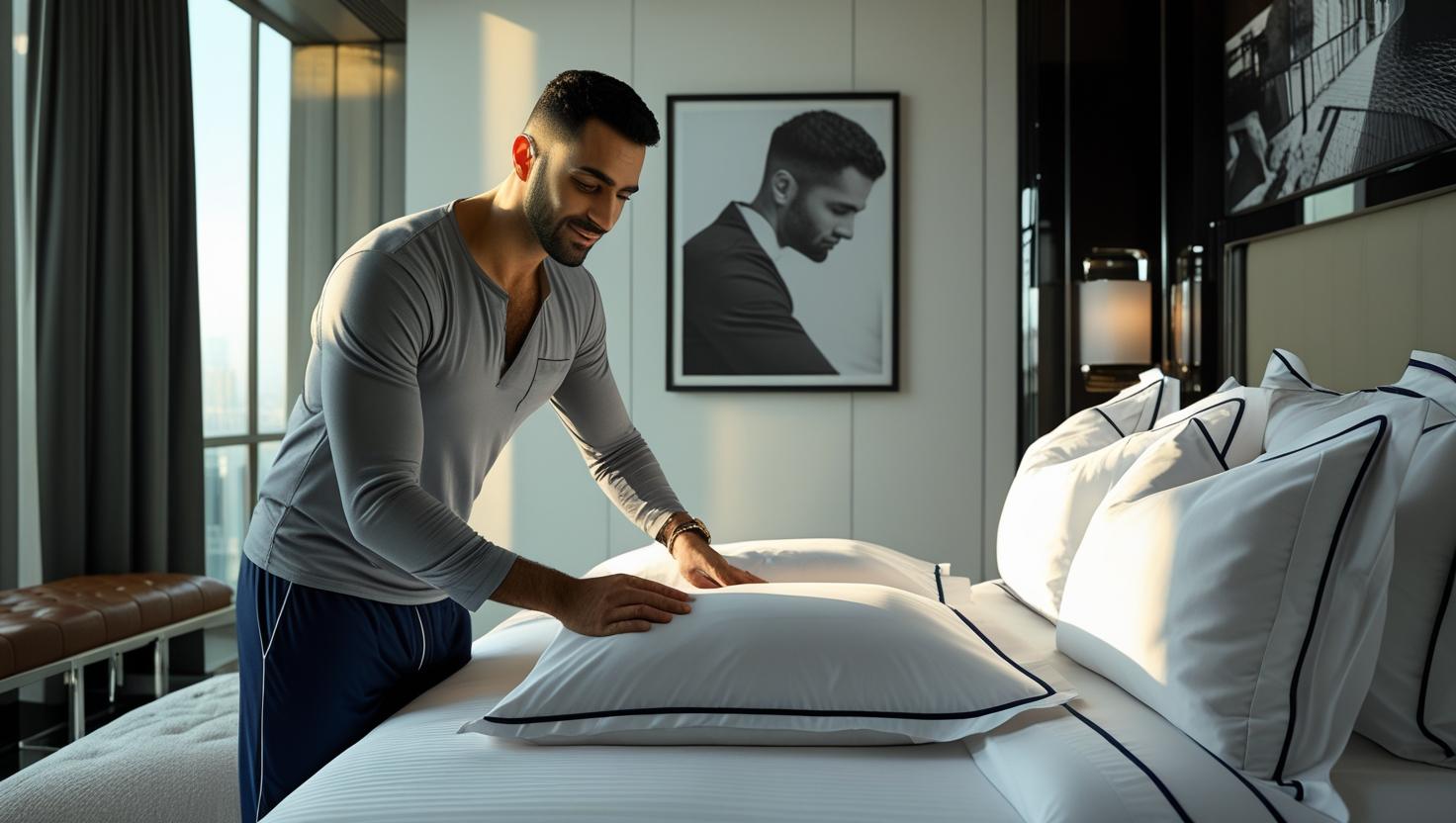
FAQ
- What is a sham bedding?
- A decorative pillow cover used to style beds, usually featuring an envelope opening and decorative edge finishes.
- How is a sham different from a pillowcase?
- Pillowcases are meant for sleeping and are often simple in design, while shams are decorative and not typically used for sleep.
- Can you sleep on sham pillows?
- Yes, but it’s not recommended for daily use, as shams are primarily for decoration and may not be made from soft, breathable fabrics.
- How many shams should you use on a bed?
- Use 2 for a twin or full bed, and 3 to 4 for queen and king-sized beds to create a plush, balanced look.
Still curious? Dive into Tuft & Needle’s guide to bed shams for another perspective.
Learn more in our guide to layering bedding for maximum comfort.
Unlocking Comfort: What Is Bedding and How to Choose the Best
What Is Bedding
What is bedding? It’s more than just a cozy layer—it’s the foundation of your sleep quality, your comfort, and your bedroom’s personality.
Key Takeaways
- Bedding includes all layers on your bed—from sheets to comforters—that affect sleep comfort and style.
- Organic cotton bedding is breathable, hypoallergenic, and environmentally friendly.
- Choosing the right bedding boosts comfort, supports skin health, and enhances bedroom aesthetics.
Understanding What Is Bedding
Bedding refers to the materials that cover and encase your bed—sheets, pillowcases, blankets, duvets, comforters, and mattress protectors. Each layer has a role in comfort, warmth, and hygiene. The right combination can transform your bedroom into a sanctuary that promotes restful, quality sleep.
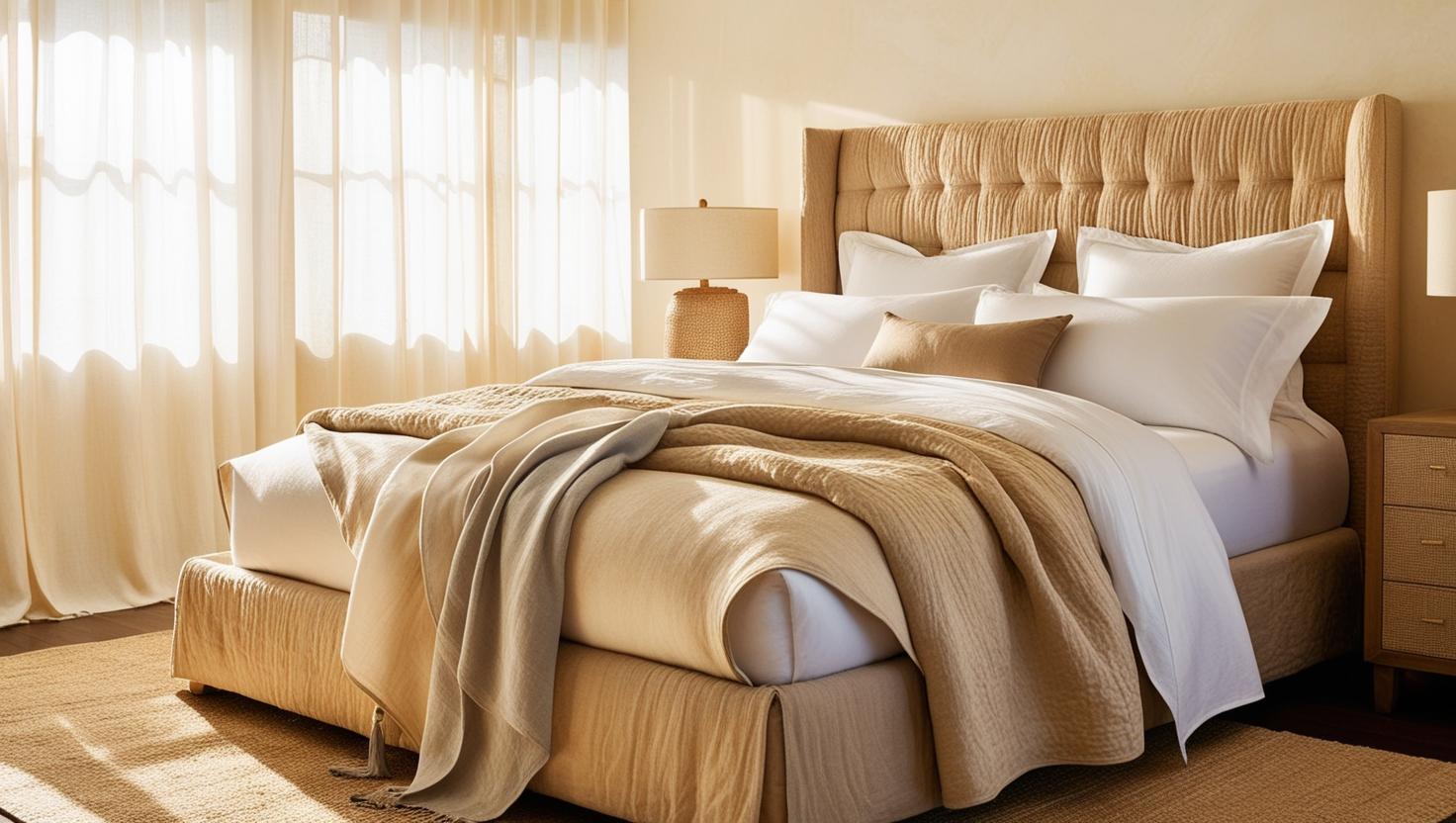
Why It Matters
High-quality bedding isn’t just about luxury—it’s functional. According to the Sleep Foundation, proper bedding supports better temperature regulation and overall sleep quality. Whether you run hot or cold at night, the right setup ensures optimal comfort.
The Organic Cotton Advantage
Organic cotton bedding stands out for its breathable softness, chemical-free production, and sustainability. It’s ideal for people with allergies or sensitive skin and continues to soften with each wash. Organic farming methods also support healthier soil and conserve water.
- Softens with every wash
- All-season breathability
- Hypoallergenic and non-toxic
- Supports eco-conscious farming
Learn more about eco-friendly bedroom ideas to create a truly sustainable sanctuary.
The Evolution of Mattresses and Bedding
To fully understand what is bedding, consider its evolution. Ancient civilizations slept on straw mats and wool-stuffed sacks, but today’s beds boast memory foam, smart tech, and pressure-relieving zones. Bedding has evolved right alongside, adapting to modern comfort needs. Learn how mattresses for side sleepers can improve your nightly rest.
Choosing the Right Bedding
1. Choose the Right Fabric
For everyday luxury, organic cotton and linen top the list. Linen gives a relaxed, airy vibe, while cotton offers crisp softness and superior breathability.
2. Understand Thread Count
A count of 300 or more generally delivers the ideal mix of durability and softness—avoid chasing ultra-high numbers that don’t add real benefit.
3. Fit the Bed Perfectly
Ill-fitting sheets disrupt sleep. Deep-pocket fitted sheets prevent nightly slippage and ensure smooth coverage.
4. Match Your Style
Color and texture matter. Choose bedding that makes you happy to climb into bed each night. See some inspiring bedroom looks.
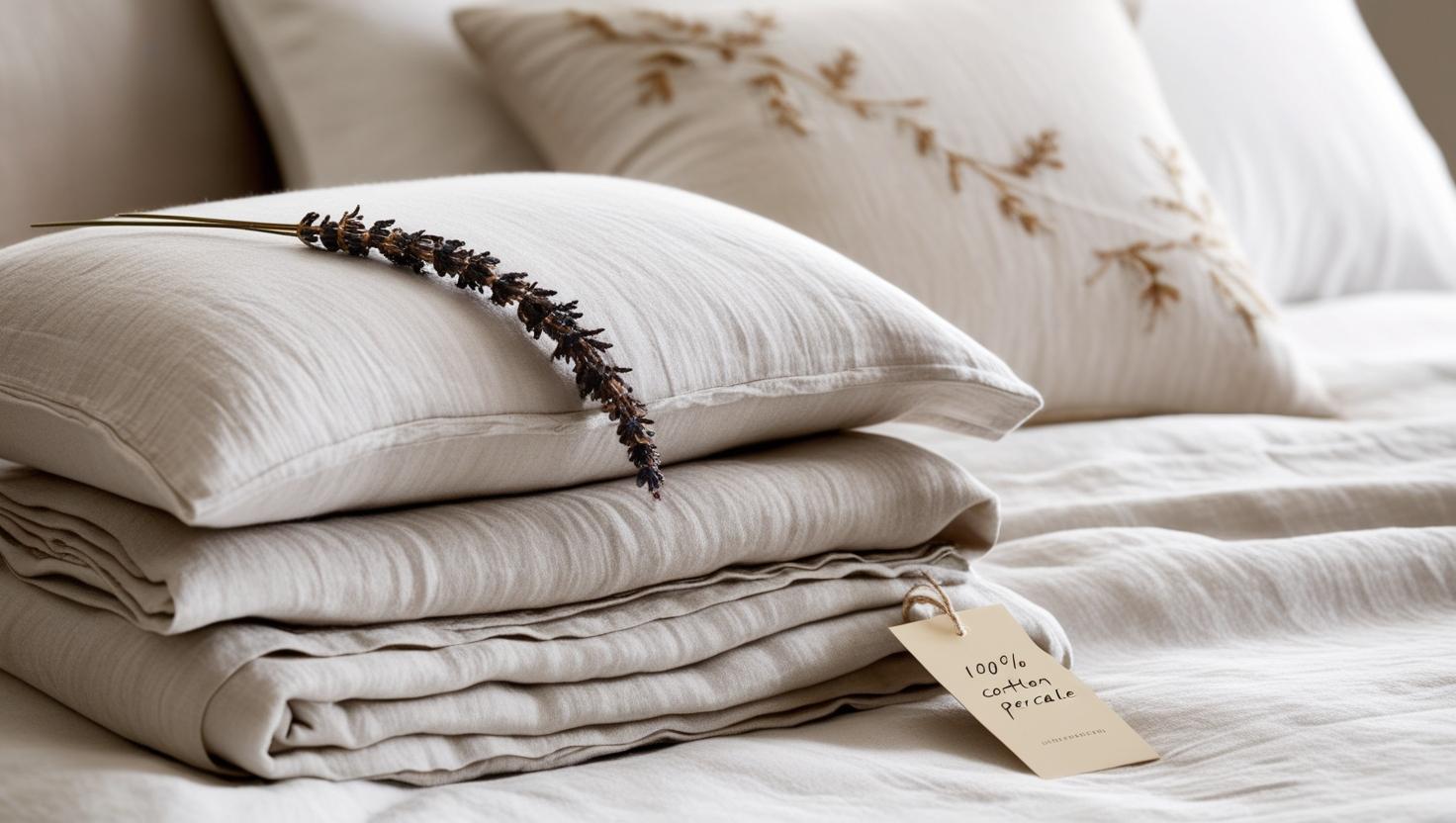
Bedding Care Tips
To maintain organic cotton bedding: wash in cold water with gentle detergent, skip bleach, and tumble dry low. Line drying adds a fresh scent and prolongs fabric life. Iron sparingly with a warm setting.
Common Bedding Myths
Myth: Organic cotton doesn’t last. Truth: It’s exceptionally durable with the right care. Over time, it softens rather than wears out—making it a cozy long-term investment.
The Cozy Wrap-Up
What is bedding? It’s your bedroom’s comfort system—a blend of form, function, and style. Investing in sustainable, high-quality bedding like organic cotton improves your rest and helps the planet. Sleep well and live better—starting with your bed.
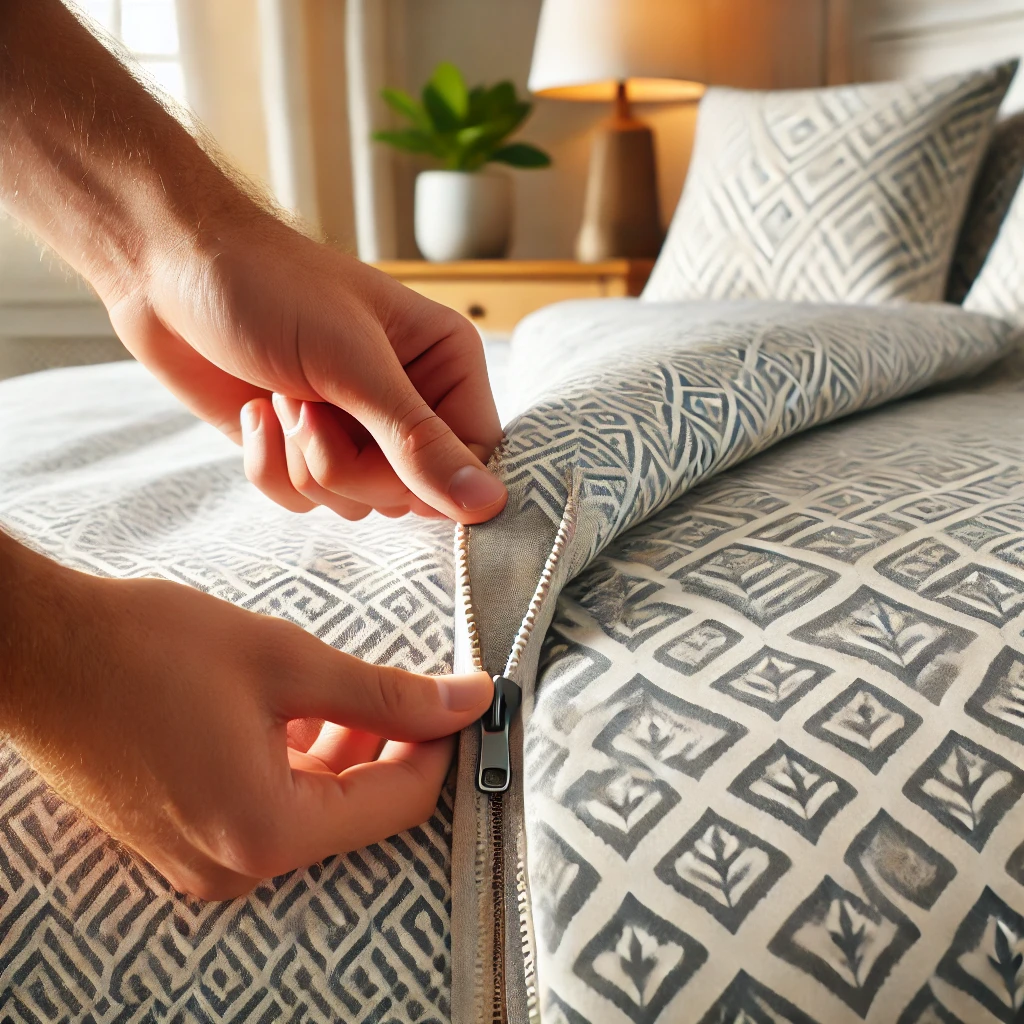
FAQ
- What is considered bedding?
- Bedding includes sheets, pillowcases, comforters, blankets, duvets, and mattress covers—everything that covers or encases the bed.
- Is bedding the same as a bedspread?
- No. A bedspread is just one component of bedding, used primarily for decorative top-layer coverage.
- How often should I change my bedding?
- Experts recommend changing sheets weekly. Duvet covers can be changed every 2–4 weeks, depending on use and cleanliness preferences.
- Why choose organic cotton bedding?
- Organic cotton is breathable, soft, and hypoallergenic. It’s produced without harmful chemicals and supports sustainable agriculture.
Learn more in this guide to mattress accessories and eco-friendly bedroom ideas. Want bedroom inspiration? Explore our tips for making your bed look luxurious and choosing the right duvet fill.
Discover the Best Bedding Types and Purchasing Guide for You
Best Bedding Types: Complete Buying Guide for Comfort & Style
The Best Bedding Types include cotton sateen sheets, bamboo and Tencel options, luxury duvets, supportive pillows, and lightweight coverlets. This comprehensive guide explains how to choose bedding materials for optimal comfort, breathability, and durability.
Key Takeaways: Best Bedding Types
- The Best Bedding Types depend more on fabric and weave than inflated thread count claims.
- Natural fibers like cotton, bamboo, and Tencel provide breathability and longevity.
- Duvets, pillows, and coverlets each contribute to overall sleep comfort and layering flexibility.
- Choose pillows based on firmness, fill, and allergy considerations for your sleep style.
- Layer thoughtfully—sheets, duvet, coverlet—for both function and design.
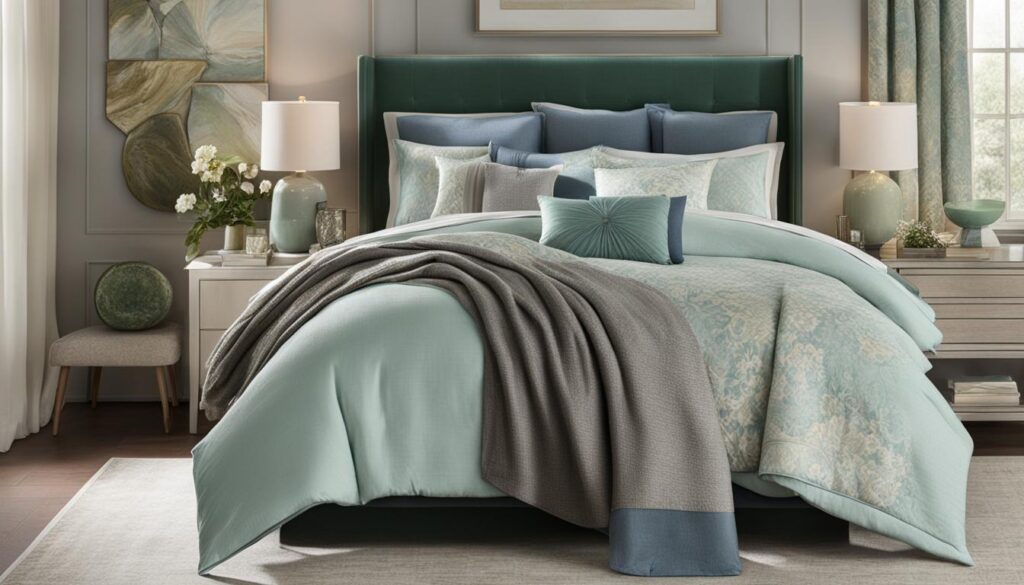
Finding the best sheets and bedding for your needs can transform your sleep quality. Rather than relying on buzzwords like “thread count,” focus on fiber quality, weave, and construction. By understanding the Best Bedding Types—from duvets and pillows to sheets and coverlets—you can create a sleep sanctuary tailored to your preferences.
How to Choose the Best Sheets for Your Home
Start your bedding journey with high-quality sheets. The Best Bedding Types always begin with the foundations of comfort, breathability, and durability. When shopping online, prioritize clear specs over marketing hype.
Sheet Fabric
The sheet fabric you choose directly impacts softness, longevity, and how the material handles temperature and moisture.
- Cotton (especially long- or extra-long staple) is breathable, soft, and durable. See Sleep Foundation’s material guide. :contentReference[oaicite:0]{index=0}
- Egyptian or Pima cotton adds luxury when genuinely sourced from long-staple fibers. :contentReference[oaicite:1]{index=1}
- Bamboo / bamboo-derived viscose is moisture-wicking, silky, and eco-conscious. :contentReference[oaicite:2]{index=2}
- Tencel (lyocell) offers a smooth finish with excellent temperature regulation. :contentReference[oaicite:3]{index=3}
- Linen breathes well and softens over time — especially good in warmer climates. :contentReference[oaicite:4]{index=4}
- Microfiber / synthetics are often lower cost but trade off some breathability. :contentReference[oaicite:5]{index=5}
Thread Count, Ply & Quality
Thread count is often misrepresented—evaluate single-ply yarns, fiber quality, and manufacturer transparency instead. :contentReference[oaicite:6]{index=6}
For cotton or bamboo sheets, a range of 200–600 is often optimal in comfort and airflow. :contentReference[oaicite:7]{index=7}
Avoid multi-ply counting tricks, and favor brands that clearly state fiber origin, weave type, and processing. :contentReference[oaicite:8]{index=8}
Weave & Feel
The weave determines texture, drape, and airflow.
- Percale is crisp and breathable — ideal for warm sleepers. :contentReference[oaicite:9]{index=9}
- Sateen is silky with subtle sheen, though may trap more heat. :contentReference[oaicite:10]{index=10}
- Satin, Twill, Jersey and others provide additional texture and stretch variations.
Choosing the Perfect Duvet
The duvet is your core warmth layer in the bed. In a high-quality bedding setup, it deserves consideration equal to sheets.
See Sleep Foundation’s guide on duvet vs. comforter to compare options. :contentReference[oaicite:11]{index=11}
Duvet Fill Options
The type of fill strongly affects warmth, loft, and allergen exposure.
- Down offers superior insulation and loft, but may not suit allergy-sensitive sleepers.
- Down alternative / synthetic fills are hypoallergenic and easier to wash.
- Hybrid fills combine both types to balance softness and support.
Duvet Cover & Style
A duvet cover protects the insert and adds visual flexibility. Opt for breathable fabrics (cotton, linen), or luxury blends in climates where extra sheen is desired.
Buying the Right Pillows
Pillows are essential in a bedding system—they support your head and neck nightly, so choose carefully.
Pillow Fill & Firmness
- Down pillows are soft and breathable; select higher fill power for loft and support.
- Down alternative / synthetic is allergy-friendly and often firmer.
- Memory foam contours to your shape — good for side sleepers or neck support.
- Hybrid pillows mix foam, fibers, or beads for tailored balance.
What Is a Coverlet & Why It Matters
A coverlet is a lightweight, often decorative layer used over or under the duvet. It adds style and flexibility to your bedding system without overhauling your core duvet or sheets.
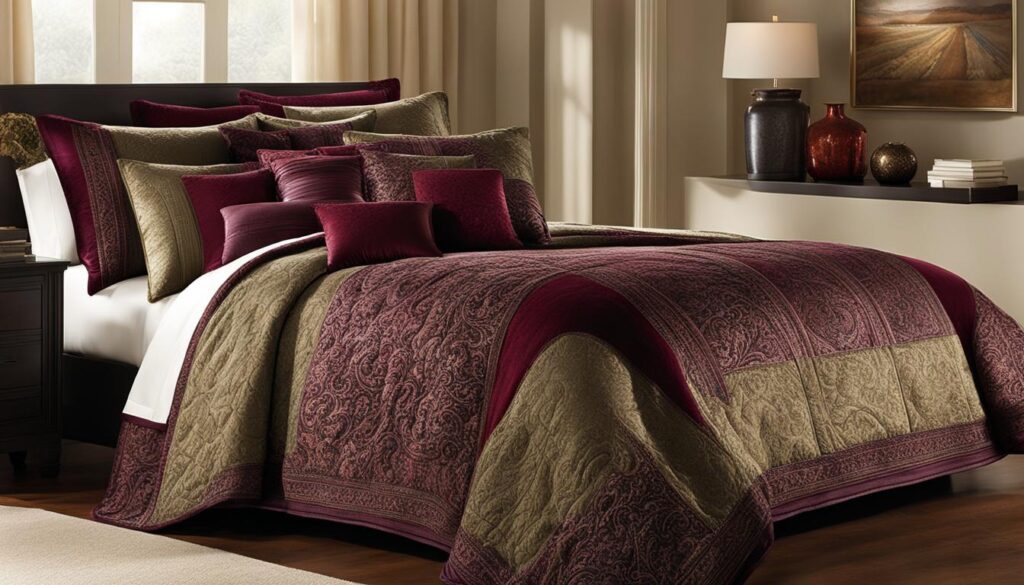
Other Sheet Materials & Niche Options
Beyond the major types, consider:
- Silk sheets — luxurious, cooling, but require delicate care.
- Flannel — brushed cotton for warmth in colder climates.
- Fabric blends — like cotton + bamboo, combining strength and softness.
Microfiber and polyester are durable and budget-friendly, though less breathable. Sleep Foundation compares microfiber vs. cotton performance. :contentReference[oaicite:12]{index=12}
Eco-Friendly vs Conventional Bedding: What to Know
Eco-conscious shoppers weigh environmental impact, certifications, and longevity when selecting bedding types.
- Certifications: Look for GOTS (organic textiles), OEKO-TEX, or other independent labels. :contentReference[oaicite:13]{index=13}
- Fiber sourcing: Bamboo grows quickly; Tencel is processed with closed-loop systems; conventional cotton can require more water and chemicals.
- Longevity: Bedding that lasts a decade offsets its production footprint.
- End-of-life disposal: Natural fibers biodegrade more readily than synthetics.
Trusted Bedding Brands & What to Watch For
Prefer brands that offer transparency — clear material data, supply info, and trials or warranties.
Brands often featured in authority reviews include Boll & Branch, Brooklinen, Saatva, Parachute, and others. Sleep Foundation frequently lists these in its sheet evaluations. :contentReference[oaicite:14]{index=14}
Better Homes & Gardens offers guidance on bedding styling and layering, which complements the technical side of bedding choice. :contentReference[oaicite:15]{index=15}
Putting It All Together: Layering Strategy
Here’s a practical layering approach using the Best Bedding Types:
- Fitted & flat sheet: the breathable base layer.
- Duvet + insert: core warmth, adjustable by season.
- Coverlet / quilt / throw: decorative and extra warmth when needed.
- Pillows & shams: coordinate style and support.
For a visual and methodical layering tutorial, check Better Homes & Gardens’ “How to Make a Bed” guide. :contentReference[oaicite:16]{index=16}
Care, Maintenance & Longevity
Washing Tips
Use cold or gentle cycles, mild detergent, and avoid strong bleach. For down/down-alternative, add tennis balls in the dryer to preserve loft.
Rotation & Storage
Rotate bedding seasonally or quarterly. Store unused sets in breathable cotton bags (not sealed plastic) in a cool, dry space.
When to Replace Bedding
If sheets lose elasticity, pillows flatten, or duvets fail to loft, it’s time for an upgrade. Good-quality bedding can last 5–10 years or more with care.
Conclusion
By combining thoughtfully chosen sheets, a proper duvet, supportive pillows, and optional coverlets, you can define the Best Bedding Types for your bedroom. Prioritize transparency, material quality, and care — and your bedding will reward you with comfort and durability night after night.
FAQ
- How do I choose the best sheets for my home?
- Evaluate fiber quality, weave type, and true single-ply construction rather than chasing high thread count numbers.
- What is the difference between thread count and sheet quality?
- Thread count is just one metric—fiber type, weave, and craftsmanship matter more. :contentReference[oaicite:17]{index=17}
- How do I choose the perfect duvet?
- Balance fill type (down vs alternative) with warmth needs and allergy sensitivity.
- What are the different types of bed pillows?
- Common options: down, synthetic, memory foam, hybrid—each varies in loft, support, and allergen friendliness.
- What is a coverlet and why do I need one?
- A coverlet is a decorative, lightweight overlay used to enhance style and provide flexible warmth layering.
Related Reading
- Best Sheet Materials (Sleep Foundation)
- Best Thread Count for Sheets (Sleep Foundation)
- How to Make a Bed (Better Homes & Gardens)
Canopy Bed Styles: From Classic Elegance to Modern Chic
Canopy Bed Styles: From Classic Elegance to Modern Minimal
Transform your bedroom into a cozy retreat with the right Canopy Bed Styles. From elegant four-posters to modern minimalist frames, canopy beds offer privacy, warmth, and visual drama. This complete guide walks you through the history, types, materials, draping ideas, and styling tips to make your canopy bed both timeless and uniquely you.
Key Takeaways: Canopy Bed Styles
- Canopy Bed Styles range from ornate four-posters to minimalist open frames, offering both comfort and statement design.
- Once built for warmth and privacy, today’s canopy beds create a sense of intimacy and architectural presence.
- Choose materials such as wood, metal, or upholstery to align with your design goals and maintenance preferences.
- Balance scale, draping, and lighting to maximize both comfort and style.
- Mix trusted internal design guides and authoritative external resources for inspiration and accuracy.
The Storied Legacy of Canopy Bed Styles
Answer first: Canopy beds began as practical furnishings for warmth and privacy, evolving into global design icons admired for their romance and structure.
From medieval castles to modern penthouses, the canopy bed remains a symbol of luxury and comfort. In today’s interiors, they’re as likely to appear in a minimalist loft as a vintage suite. For deeper insight, see Four-Poster Bed History and Canopy & Four-Poster Beds: A Guide.

Most Beloved Canopy Bed Styles
Four-Poster Canopy Bed
Answer first: The classic four-poster defines the canopy category—grand, symmetrical, and endlessly adaptable.
Featuring four tall posts and overhead rails for draping, the four-poster anchors a room with visual weight. Use carved wood for traditional homes or matte metal for transitional looks. For more inspiration, explore Choosing a Four-Poster Canopy Bed and Four-Poster Canopy Bed: Classic Design.
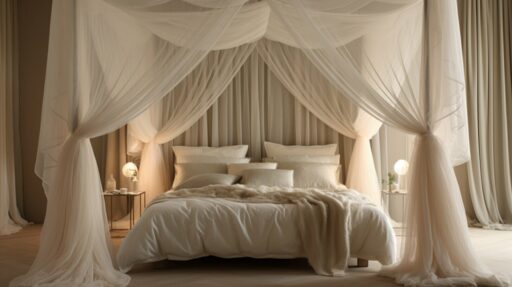
Lit à la Duchesse (Half-Tester)
Answer first: A half-tester canopy attaches at the wall or ceiling to create a luxurious focal point with less bulk—perfect for high ceilings or narrow rooms.
This French-inspired design features decorative cornices and gilded or upholstered detailing. It’s ideal for refined, classic interiors where you want a touch of grandeur without overwhelming the space. For styling ideas, see Royal Appeal: Canopy Beds.
Lit à la Polonaise
Answer first: Romantic and curvy, this Rococo classic adds theatrical charm with its crown-shaped canopy and draped fabric arcs.
Pair soft pastels with tufted textiles, or go modern with monochrome sheers and abstract artwork. For creative styling, explore Decor Themes for Canopy Beds and Canopy Bed Decorating Ideas.
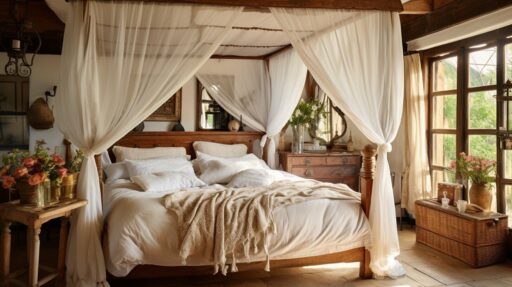
Modern Minimalist Canopy
Answer first: Today’s minimalist canopy designs celebrate clean lines, open space, and sustainable materials.
Lightweight metal or wood frames keep visual flow, while organic bedding and eco-conscious sheets add softness. Explore more in Minimalist Canopy Bed Frames and Best Canopy Bed Frames.
Draping, Lighting & Scale Tips
Answer first: Your canopy’s success depends on balance—draping, scale, and lighting must work together to shape mood and function.
- Scale: Leave at least six inches between the canopy and ceiling for breathability.
- Draping: Use sheer panels for airiness or heavier fabrics for privacy and sound dampening.
- Lighting: Hang pendants or add string lights for soft, even glow—avoid harsh overhead bulbs.
For pro guidance, visit Sleep Foundation: Types of Bed Frames, Parachute: Bed Frame Ideas, and Better Homes & Gardens: Canopy Beds Are Back.
Eco-Friendly vs. Conventional Choices
Answer first: Sustainable materials extend longevity and lower your bedroom’s carbon footprint without sacrificing beauty.
Opt for FSC-certified wood, recycled metals, and non-toxic finishes. Pair with organic bedding, sustainable bedding, and eco-conscious sheets to complete your green setup. Eco-aware choices last longer and support mindful living.
FAQ
- Are canopy beds still in style?
- Yes. Canopy Bed Styles remain a favorite among designers for their comfort, privacy, and elegance. They fit beautifully in both modern and traditional interiors.
- Can canopy beds fit in small rooms?
- Absolutely. Choose low-profile frames, light fabrics, and neutral colors to keep the room feeling spacious and balanced.
- What materials work best for canopies?
- Wood offers warmth, metal adds structure, and upholstered frames soften sound and texture.
- How do I clean canopy drapes?
- Wash light fabrics regularly and dry-clean velvet or silk. Use liners to protect delicate materials.
- Can I DIY a canopy bed?
- Yes. Many use ceiling-mounted rods or wooden frames. Just ensure proper hardware and balanced support.
Final Thoughts
Answer first: Whether you love ornate tradition or sleek modern simplicity, Canopy Bed Styles elevate your bedroom from ordinary to enchanting. Discover even more canopy inspiration and styling guides at Cozy Bed Quarters.
Related Reading
Understanding Bedding Shams: A Cozy Guide
Dive into the world of comfort with our guide to Understanding Bedding Shams – your key to elevating bedroom elegance and style.
Continue readingFour-Poster Bed History: A Journey Through Time and Design
Four-Poster Bed: Timeless Elegance & Comfort in 7 Fascinating Facts
The four-poster bed remains one of the most iconic furniture pieces in history. From medieval castles to modern homes, this design has evolved beautifully while keeping its luxurious comfort intact. For more design inspiration, don’t miss our Ultimate Guide to Sustainable Bed Frames.
Key Takeaways
- Historical Roots: The four-poster bed dates back to the 14th century, originally built for warmth and privacy.
- Symbol of Prestige: Once reserved for royalty and nobility, it quickly became a symbol of wealth and status.
- Modern Adaptations: Today’s versions blend minimalist and contemporary styles with traditional charm.
- Practical Benefits: Curtains provide warmth, privacy, and light control for better sleep.
- Design Versatility: Works in both spacious and compact bedrooms with smart styling.
1. A Glimpse into History
This bed style, marked by tall vertical posts and optional canopy drapery, first appeared in the 14th century. Its purpose was functional—providing warmth in drafty homes and privacy in shared spaces. Curtains enclosed the sleeper in a cozy cocoon, blocking out cold air.
Over time, it became a mark of status. Royal families and aristocrats commissioned elaborate versions with carved oak, silks, and heavy velvets. The Sleep Foundation notes that such beds were often considered heirlooms, passed down for generations.
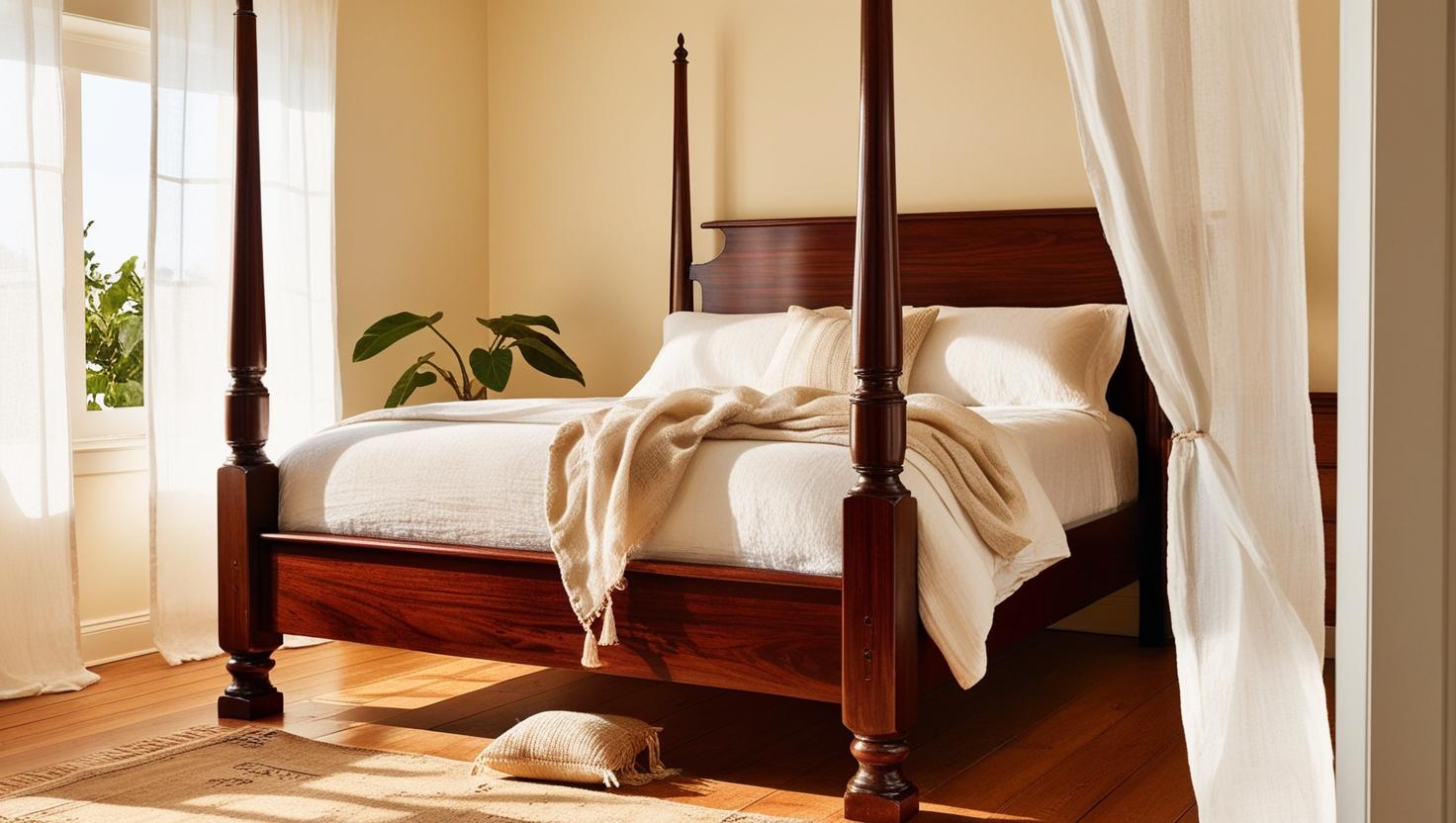
2. The Evolution of Design
While early four-poster beds were ornate and grand, modern versions emphasize simplicity. Sleek frames in wood or metal now appeal to minimalist tastes. This shift allows the design to remain relevant across centuries.
For eco-conscious shoppers, four-poster frames can even be compared with other green furniture options in our sustainable bed frame guide.
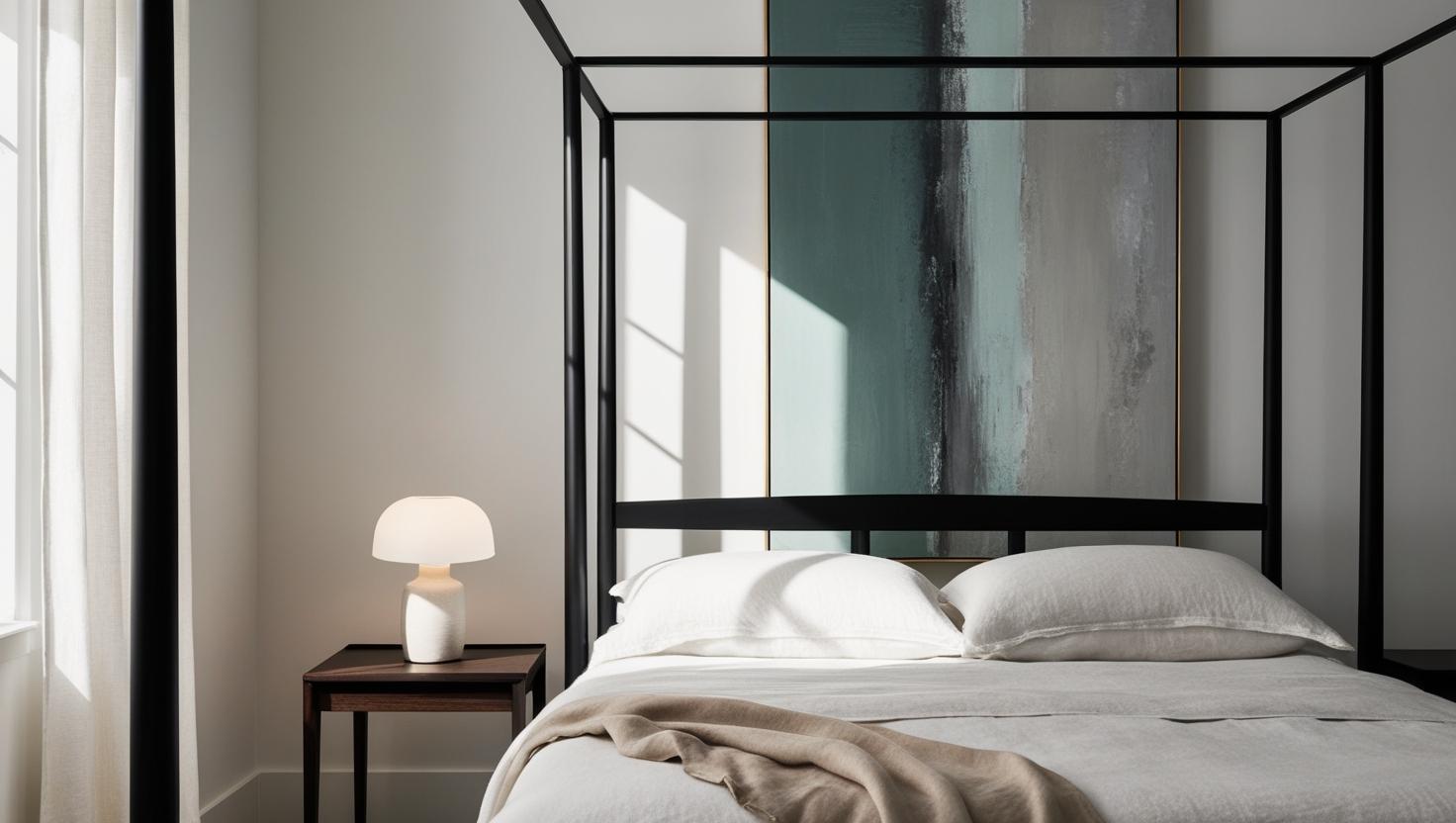
3. Functional Benefits
Beyond aesthetics, the four-poster bed offers real benefits for sleep and comfort:
- Warmth: Drapes hold in body heat during colder nights.
- Privacy: Perfect for shared rooms or open-plan homes.
- Light Control: Curtains block out unwanted light for better rest.
According to the American Academy of Sleep Medicine, maintaining darkness in the bedroom supports healthy circadian rhythms—something a four-poster setup can help achieve.
4. Styling Tips for Modern Spaces
Incorporating this traditional frame into a modern room is easier than you think:
- Minimalist Styling: Choose a simple frame without ornate carvings.
- Light Drapery: Use breezy linen or sheer fabrics instead of heavy curtains.
- Neutral Palettes: Keep the room’s color scheme cohesive and calm.
For inspiration, explore our Four-Poster vs Canopy Bed Guide to see how this timeless style compares with other popular frames.
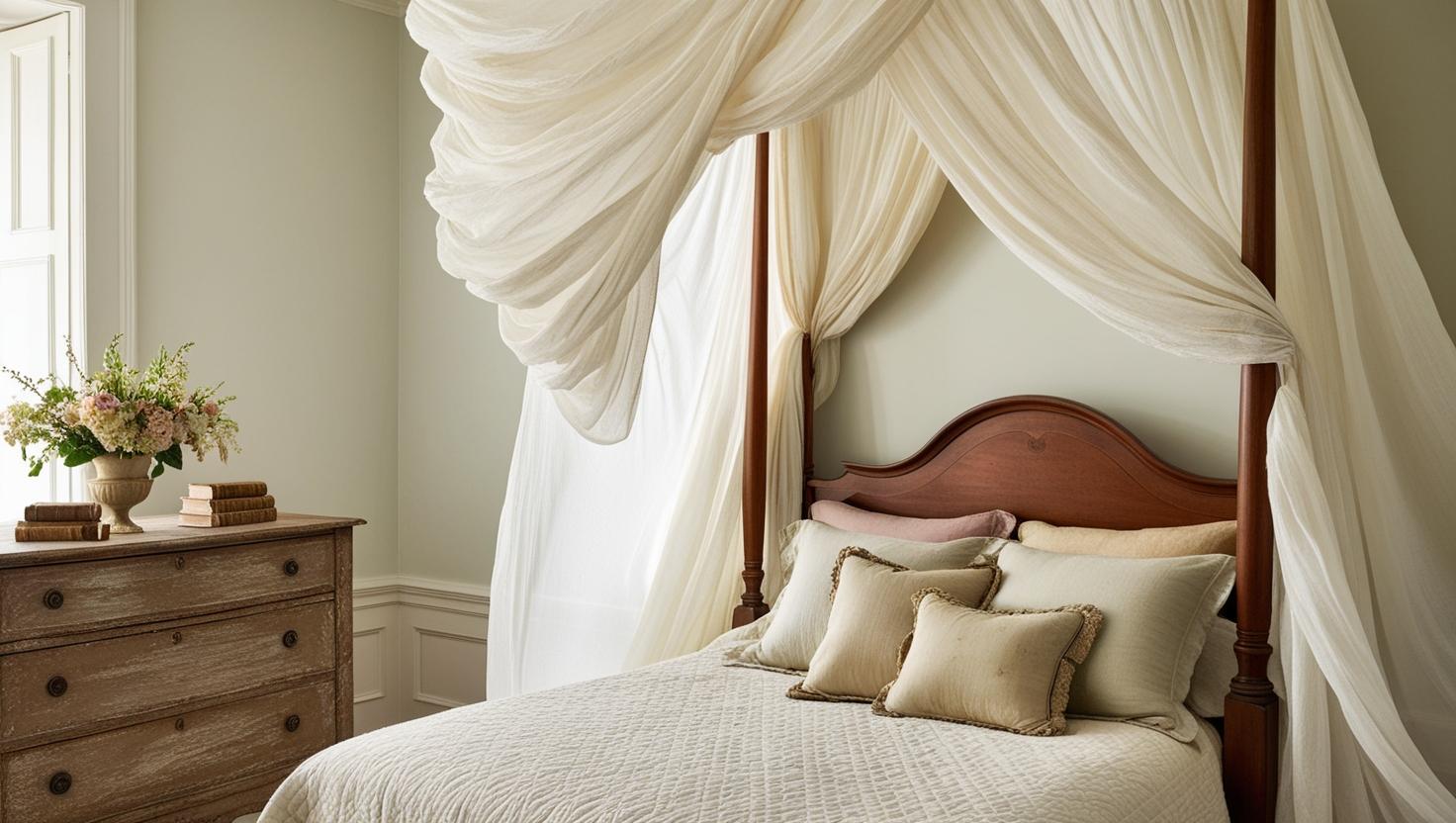
5. Suitability for Various Room Sizes
Many assume these beds only belong in large rooms, but that’s not true. Slimmed-down designs with slender posts and lighter finishes make them suitable for compact bedrooms. Opting for low-profile frames prevents the bed from overpowering the space.
6. Sustainability and Longevity
Eco-friendly options are available for shoppers prioritizing sustainability. Responsibly sourced wood ensures long-lasting quality while reducing environmental impact. Certifications like CertiPUR-US help verify the safety and eco-friendliness of bedding and mattress materials that pair with your frame.
For more insights, the EPA’s Sustainability Resource offers guidance on making greener furniture choices.
7. Creating a Personal Sanctuary
A four-poster bed transforms your bedroom into a retreat. Whether styled with rich fabrics for a regal look or kept minimal with airy sheers, it instantly elevates the atmosphere of rest and relaxation.
Explore our Four-Poster Bed Collection for handpicked designs that blend tradition with modern comfort. For a complete eco-friendly setup, pair your frame with tips from our Eco-Friendly Bedding Guide.
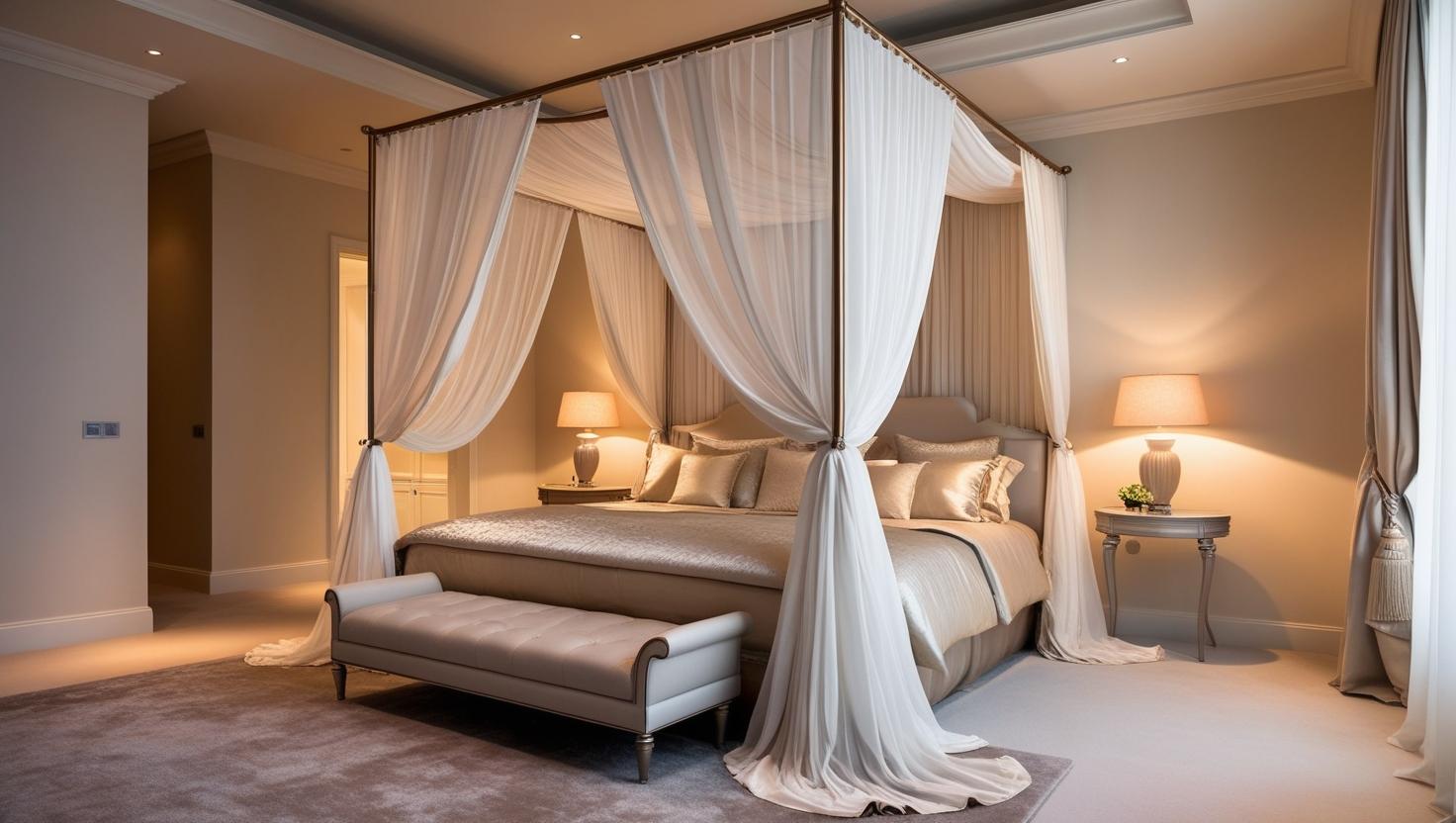
FAQ
What is the origin of the four-poster bed?
This bed style originated in the 14th century, designed to retain warmth and create privacy with curtains.
Are four-poster beds suitable for small bedrooms?
Yes, slim posts and lighter fabrics make them practical even for compact spaces.
Can I customize the drapery?
Absolutely. Sheers, linens, or blackout curtains allow you to adapt the look and functionality.
Are there eco-friendly four-poster options?
Yes, many are made with sustainably harvested wood and eco-certified materials.
Conclusion
The four-poster bed continues to enchant with its balance of history, elegance, and functionality. Whether you prefer a modern minimalist frame or a traditional canopy, it adds timeless charm to any room. For more bedroom design inspiration and bedding insights, visit Cozy Bed Quarters.
Related reading from Cozy Bed Quarters
Other reading we found popular
- Architectural Digest – Duvet vs Comforter
- The Spruce – Best Bedroom Color Schemes
- Eachnight – Four-Poster Bed History
- Sleep Foundation – Bedroom Design Tips

